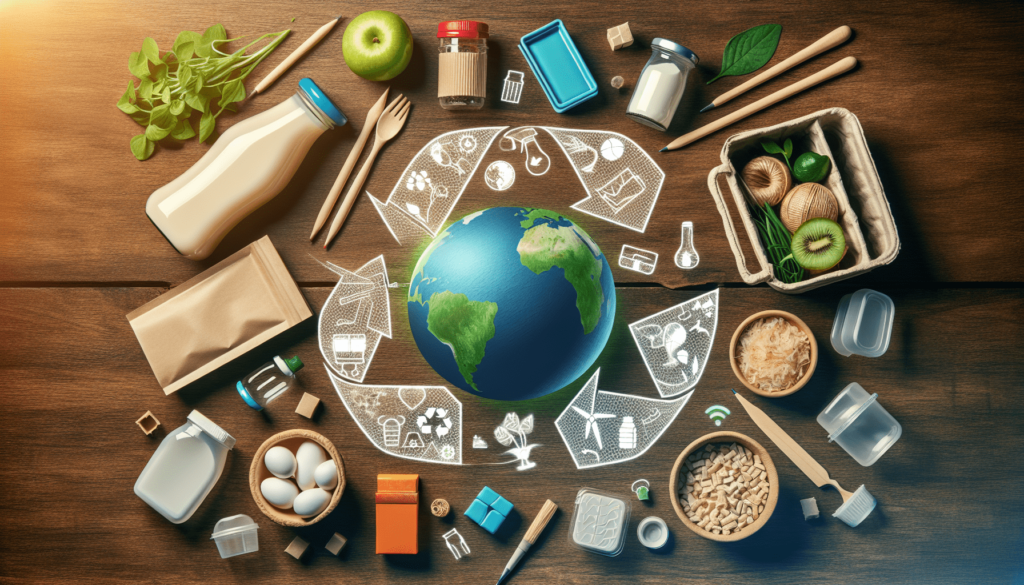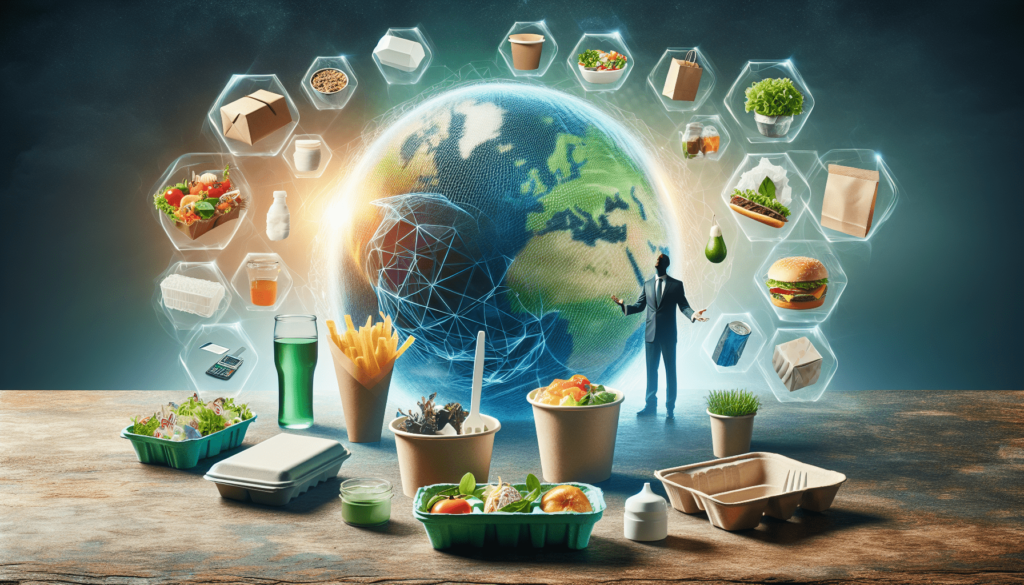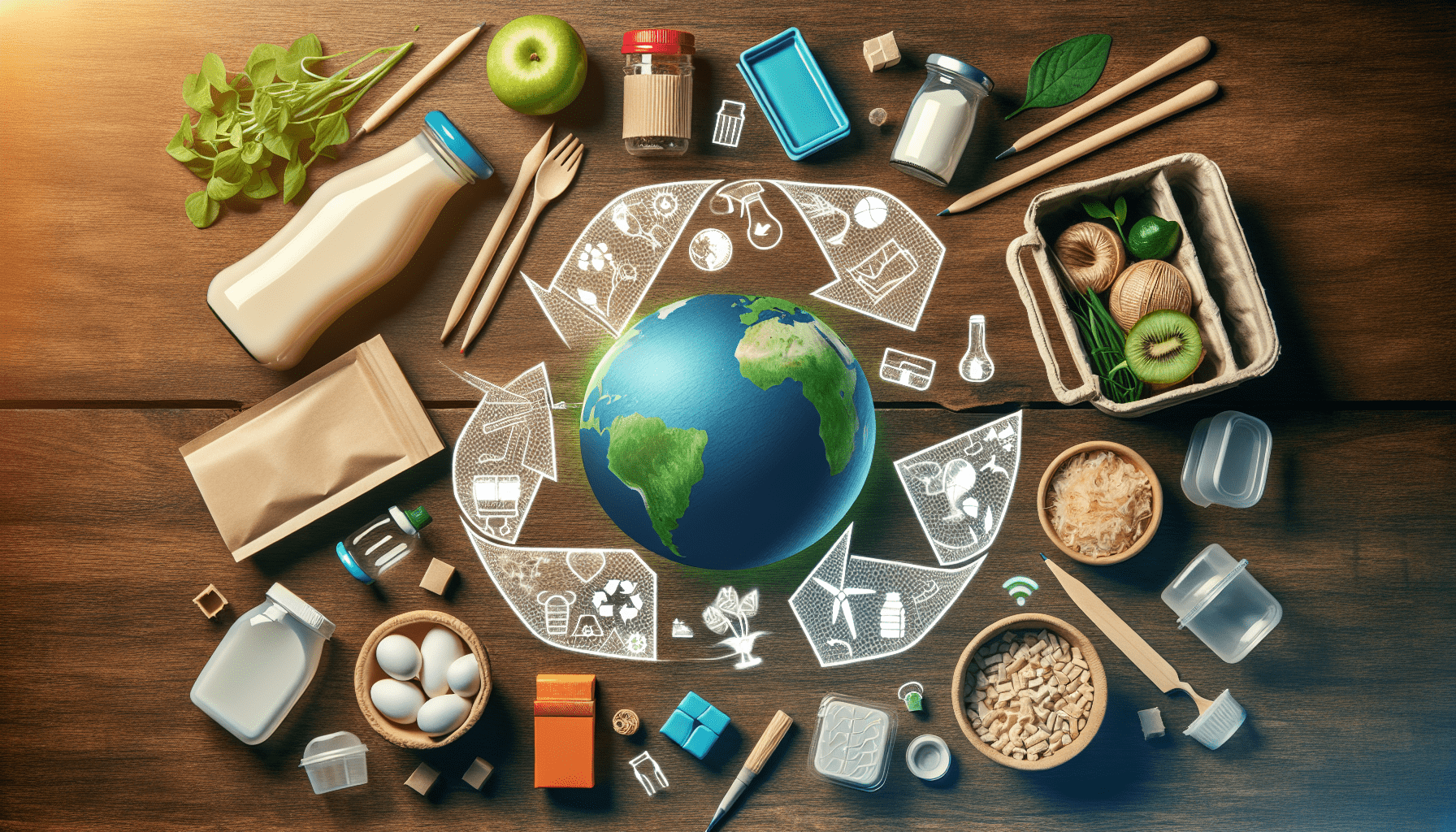In a rapidly evolving world where sustainability is becoming an increasingly pivotal concern, the future of sustainable food packaging emerges as a crucial topic of discussion. With mounting concerns about the environmental impact of packaging materials, the need for innovative and eco-friendly alternatives has never been more urgent. This article explores the advancements and potential of sustainable food packaging, shedding light on how cutting-edge technologies and materials are revolutionizing the way we preserve, protect, and consume our food. So, fasten your seatbelts as we embark on a journey to unravel the exciting possibilities that lie ahead in the realm of sustainable food packaging. Prepare to be amazed by the ingenuity and creativity that promises a greener future for our beloved planet.
The Rise of Sustainable Packaging
The Environmental Impact of Food Packaging
Food packaging plays a vital role in preserving and protecting food, ensuring its freshness and safety. However, traditional packaging materials such as plastics have significant environmental consequences. They contribute to the growing issue of waste generation and pollution. Plastics can take hundreds of years to break down, releasing harmful chemicals into the environment. This has led to an urgent need for sustainable packaging alternatives.
Consumer Demand for Sustainable Packaging
Consumers today are increasingly concerned about the environmental impact of their purchasing decisions, including the packaging that comes with their food. They seek out sustainable options and are willing to pay a premium for products that prioritize eco-friendly packaging. This consumer demand has been a driving force behind the rise of sustainable packaging in the food industry.
Regulations and Policies Driving Change
Governments and regulatory bodies around the world are recognizing the importance of sustainable packaging and taking steps to address the issue. They are implementing regulations and policies that encourage or even mandate the use of sustainable packaging materials. These regulations play a crucial role in driving change and accelerating the adoption of sustainable packaging solutions.
Eco-friendly Materials and Design
Biodegradable Packaging Solutions
Biodegradable packaging offers a promising solution to reduce the environmental impact of food packaging. These materials can break down naturally over time, returning to the environment without leaving harmful residues. Options such as biodegradable plastics, made from renewable resources like cornstarch, offer a more environmentally friendly alternative to traditional plastics.
Compostable Packaging Innovations
Compostable packaging goes a step further than biodegradable materials. It not only breaks down but also enriches the soil when composted. Made from natural materials like plant fibers, compostable packaging provides a sustainable option that aligns with the circular economy concept. It offers the potential to create a closed-loop system where packaging waste becomes a valuable resource.
Reusable and Refillable Options
Reusable packaging is gaining popularity as a sustainable choice. It involves using containers that can be returned, refilled, and used multiple times. This reduces the amount of packaging waste generated and promotes a circular economy approach. Refillable options, such as bulk bins or dispensers, enable consumers to purchase the desired quantity of a product without the need for excessive packaging.

Technological Advancements in Packaging
Smart Packaging Solutions
Advancements in technology have paved the way for smart packaging solutions that go beyond their traditional roles. Smart packaging incorporates elements such as sensors, indicators, or QR codes to provide real-time information about product quality, freshness, and safety. This not only enhances the consumer experience but also helps reduce food waste by enabling better inventory management and monitoring.
Active and Intelligent Packaging
Active packaging actively interacts with the packaged food, extending its shelf life and preserving its quality. This can include oxygen scavengers, antimicrobial coatings, or moisture absorbers that help prevent spoilage. Intelligent packaging, on the other hand, provides information about the condition and history of the product, enabling consumers to make informed decisions and avoid waste.
Nanotechnology in Packaging
Nanotechnology offers exciting possibilities for sustainable food packaging. It involves manipulating materials at the nanoscale to enhance their properties. Nanomaterials can be used to develop packaging that is lightweight, strong, and has excellent barrier properties. They can also be designed to interact with the packaged food, providing protection against spoilage or extending shelf life.
Reducing Food Waste Through Packaging
Improved Preservation and Shelf Life
One of the key benefits of sustainable food packaging is its ability to improve preservation and extend the shelf life of food. By utilizing packaging materials that provide optimal barrier properties and protection against contaminants, food can be kept fresh for longer periods. This helps reduce food waste, as less food is discarded due to spoilage or expiration.
Innovative Packaging for Fresh Produce
Fresh produce often has a short shelf life, making it more susceptible to spoilage and waste. Innovative packaging solutions, such as modified atmosphere packaging or edible coatings, can significantly extend the freshness of fruits and vegetables. These packaging methods create a controlled environment that slows down the ripening process and inhibits the growth of microbiological organisms.
Precision and Controlled Packaging
Precision packaging involves packaging food in exact quantities and portion sizes, reducing the risk of overconsumption or waste. Controlled packaging techniques, such as portion-controlled pouches or resealable packaging, enable consumers to use only what they need and keep the rest fresh for later consumption. These approaches contribute to minimizing food waste and promoting sustainable consumption habits.

Minimalist and Lightweight Packaging
Reducing Material Usage and Transportation Costs
Minimalist packaging aims to reduce the overall material usage without compromising product safety or functionality. By eliminating unnecessary layers, excess space, or non-recyclable materials, packaging becomes more sustainable. This approach not only minimizes environmental impact but also reduces transportation costs, as lighter packaging requires fewer resources for shipping.
Sustainable Single-Use Packaging Alternatives
Single-use packaging has long been associated with excessive waste generation. However, sustainable single-use alternatives have emerged that prioritize eco-friendly materials and design. Options like plant-based plastics, paper-based packaging, or even edible packaging offer environmentally conscious choices for single-use applications, reducing the environmental footprint.
Flexible Packaging Solutions
Flexible packaging provides versatility and adaptability while reducing material usage. Lightweight and highly space-efficient, it offers advantages in terms of transportation and storage. Flexible packaging materials, such as pouches or films, can be made from sustainable sources and are often recyclable, making them an attractive option for sustainable food packaging.
Tracking and Transparency
Smart Labels for Traceability
Smart labels, equipped with technologies like RFID (Radio Frequency Identification) or QR codes, enable the tracking and traceability of food products throughout the supply chain. These labels provide information about origin, production methods, and storage conditions. This transparency gives consumers confidence in the products they purchase and supports sustainable practices by incentivizing responsible sourcing and supply chain management.
Blockchain Technology in Packaging
Blockchain technology has the potential to revolutionize the transparency and accountability of the food packaging industry. By creating a decentralized and immutable ledger, it allows for the secure recording and tracking of every transaction and event involving a product. This enables end-to-end traceability, ensuring the integrity of the packaging process and promoting sustainable practices.
Consumer Information and Education
Sustainable food packaging requires consumer awareness and understanding of its benefits. Providing clear and concise information about the packaging materials used, recycling instructions, and the environmental impact can empower consumers to make informed choices. Educational campaigns and labeling systems, such as eco-labels or recycling symbols, support the dissemination of this information and encourage sustainable packaging practices.
The Role of Circular Economy in Food Packaging
Recycling and Upcycling Initiatives
Promoting recycling and upcycling initiatives is a key aspect of creating a circular economy in food packaging. Recycling involves collecting and processing used packaging materials to create new products, reducing the demand for virgin materials. Upcycling takes recycling a step further, transforming waste materials into higher-value products. Both approaches help minimize waste and conserve resources.
Closed-loop Systems for Packaging Materials
Closed-loop systems aim to keep packaging materials within the production cycle and reduce waste. It involves designing packaging that is easy to recover, recycle, and reuse. By creating a closed-loop system, packaging materials can be continuously and efficiently reintroduced into the production process, reducing the need for new materials and minimizing environmental impact.
Designing for Disassembly
Designing packaging with disassembly in mind allows for easier separation of different materials, facilitating recycling and recovery. By considering the end-of-life of packaging during the design phase, it becomes possible to optimize materials and construction methods for efficient disassembly. This approach promotes recycling and supports the transition to a circular economy in the food packaging industry.
Incentives and Collaboration for Sustainable Packaging
Government Incentives and Subsidies
Governments play a crucial role in fostering sustainability in the food packaging industry. By offering incentives, subsidies, or tax breaks to companies that adopt sustainable packaging practices, governments can encourage widespread change. These measures can include financial support for research and development, grants for implementing sustainable packaging solutions, or preferential treatment in public procurement processes.
Partnerships in the Supply Chain
Achieving sustainable packaging goals requires collaboration among stakeholders in the supply chain. Manufacturers, retailers, and packaging suppliers can work together to develop and implement sustainable packaging solutions. By sharing knowledge, resources, and best practices, these partnerships can drive innovation and accelerate the adoption of sustainable packaging throughout the industry.
Industry Collaboration for Research and Development
Collaborative efforts within the food packaging industry can lead to significant advancements in sustainable packaging solutions. By pooling resources and expertise, companies can collectively invest in research and development projects. These collaborations can focus on developing new materials, testing innovative technologies, or exploring alternative packaging designs. The sharing of knowledge and the collective pursuit of sustainability goals can drive transformative change in the industry.
Challenges and Obstacles in Sustainable Packaging
Cost and Feasibility
Despite the growing demand for sustainable packaging, cost and feasibility remain significant challenges. Sustainable packaging materials and technologies often come at a higher price point than their conventional counterparts. The initial investment required for transitioning to sustainable packaging may pose financial obstacles for some companies, especially smaller businesses. Overcoming these challenges requires long-term planning, incentives, and support from consumers, governments, and the industry.
Infrastructure and Collection Systems
Implementing sustainable packaging solutions requires an efficient infrastructure for waste collection, sorting, and recycling. The lack of proper collection systems or recycling facilities can hinder the effectiveness of sustainable packaging initiatives. Investment in infrastructure development, including the expansion of recycling capabilities and the improvement of waste management systems, is necessary to support the transition to sustainable packaging on a larger scale.
Consumer Behavior and Perception
Changing consumer behavior and perception is crucial for the success of sustainable packaging. Despite the increased awareness of environmental issues, some consumers still prioritize convenience over sustainability. Convincing consumers to embrace sustainable packaging alternatives or adopt new consumption habits may require education, awareness campaigns, and clear communication about the benefits of sustainable packaging for the environment and society.
The Future Vision of Sustainable Food Packaging
Innovative Solutions and Breakthroughs
The future of sustainable food packaging holds exciting potential for innovation and breakthroughs. The ongoing research and development in materials science, nanotechnology, and advanced manufacturing techniques will continue to drive the creation of new sustainable packaging solutions. From edible packaging made from seaweed to packaging embedded with nanosensors that detect food spoilage, the possibilities are limitless.
Mainstream Adoption of Sustainable Packaging
As consumer demand for sustainable packaging grows and regulations tighten, sustainable packaging solutions will become increasingly mainstream. More companies will embrace sustainable practices, incorporating eco-friendly materials and design into their packaging strategies. This shift will not only benefit the environment but also enhance brand reputation and attract eco-conscious consumers.
Impact on the Environment and Society
The widespread adoption of sustainable food packaging will have a significant positive impact on the environment and society as a whole. By reducing waste generation, conserving resources, and minimizing pollution, sustainable packaging contributes to a healthier planet. It also supports the development of a circular economy, promoting responsible consumption and production patterns. Ultimately, sustainable food packaging plays a vital role in creating a more sustainable and resilient future for all.

